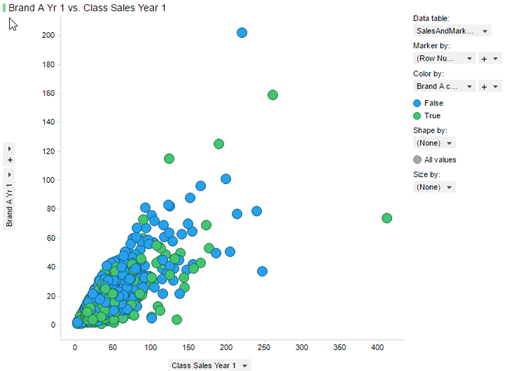TERR_Boolean
In the Spotfire
Custom Expressions dialog box, you can select
the pre-defined expression
TERR_Boolean
from the
Function list. This expression function
invokes the TERR engine to return a vector or a single column data frame of the
data type
logical (TRUE or
FALSE), which is converted to a Spotfire
column of the corresponding Spotfire data type
Boolean.
| Argument | Argument description |
|---|---|
| A TERR script. | The TERR script contains the following.
|
| Spotfire column names. | Passed as additional arguments, these are
the data column names that
input1 to
inputN represent. All
columns must be the same length.
|
| Returned by TERR | Converted in Spotfire |
|---|---|
A vector or a single column data
frame of data type
logical.
|
A column with the same number of rows as the input, and of the data type Boolean. |
TERR_Boolean example
This example uses the Sales and Marketing visualization in the Spotfire example library. The column created by the example is used as the Color by control.
TERR_Boolean("output <- input1 > .10",[Class Change Yr 1 to Yr 2])The resulting visualization in Spotfire shows the following.

max, and Spotfire contains the function
Max. ) You must overwrite this autocorrection
manually to ensure that you use the TERR function case and name in your
expression function.
See Embedding the Contents of a Script in an Expression Function for a detailed procedure for creating an expression function.